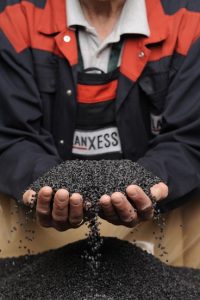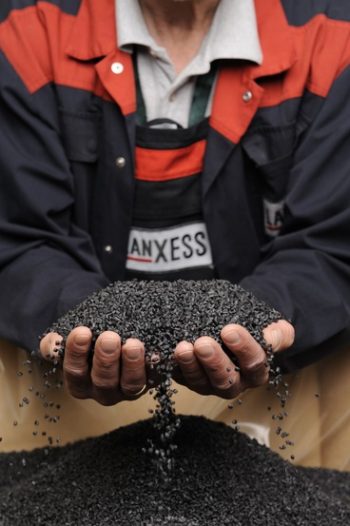
Specialty chemicals company LANXESS will primarily focus on the sustainable in-vehicle applications of its thermoplastics during its appearance at the Fakuma trade fair. As Jan Bender, Head of Marketing EMEA HPM (High Performance Materials) at LANXESS, explains: “We want to show that our high performance plastics contribute significantly to environmentally and climate-friendly mobility. We are also presenting ourselves as a competent development partner for applications of plastics in new forms of mobility, such as electric mobility and self-driving vehicles, and are demonstrating possible solutions with our materials.”
Long-term resistance up to 230 °C
The new XTS2 heat stabilization system (Xtreme Temperature Stabilization) is a highlight of LANXESS’s booth. This system increases the continuous operating temperatures of certain Durethan polyamides to over 230°C. The first representative of the new product line is a glass-fiber-reinforced polyamide 66 grade, Durethan AKV35XTS2. “This is our response to the growing trend toward more efficient combustion engines that subject plastic components under the hood to higher thermal loads,” explains Bender. The new polyamides provide an alternative to costly, heat-stabilized specialty thermoplastics such as fully and semi-aromatic polyamides and polyphenylene sulfide. Possible applications include air intake modules with an integrated intercooler or air ducts near the turbocharger.
Tailor-made for components in vehicle batteries
Flame-retardant polyamides and polyesters that have major potential for use within electric vehicles and self-driving vehicle designs represent another key area. One example is Pocan AF4130, a blend of PBT (polybutylene terephthalate) and ASA (acrylonitrile-styrene-acrylate). According to Bender, “the material is particularly suitable for precision components within vehicle battery systems because it has low warpage and shrinkage and is highly flame-retardant.” For instance, the material obtained 5VA classification (1.5 mm) in the UL 94 flammability test. It also has very good chemical resistance, for example to an electrolyte widely used in lithium-ion batteries (DIN EN 22088-3).
Lightweight structures and indestructible underfloor protection paneling
Using various exhibits, LANXESS will highlight the great potential offered by plastic-metal-hybrid technology (hybrid technology) and the Tepex-branded continuous-fiber-reinforced thermoplastic composites in lightweight automotive design. Lightweight frontend modules with high load capacity produced with hybrid technology will be on show. By way of Tepex exhibits, LANXESS will be displaying serially manufactured underfloor protection paneling such as a center tunnel cover and engine underride protection that stand out due to their very high degree of mechanical toughness. A lightweight door module support for a compact-class vehicle and a structurally reinforced front end with integrated active grille shutters (AGS) will also be on show.
New, blow-moldable polyamides for forced induction engines
The trend towards turbo-charged engines has led to more stringent heat resistance requirements within engine air management for hollow plastic parts such as charge-air ducts. LANXESS will present the new Durethan AKV320ZH2.0 and Durethan BKV320ZH2.0 polyamides at Fakuma. These are designed mainly for 3D suction blow molding, of air ducts, for example. Both compounds that have been optimized for large-scale production have a wide processing window and provide components with excellent surfaces. “We are also working to transfer our XTS2 technology to our blow-mold products,” concludes Bender.












